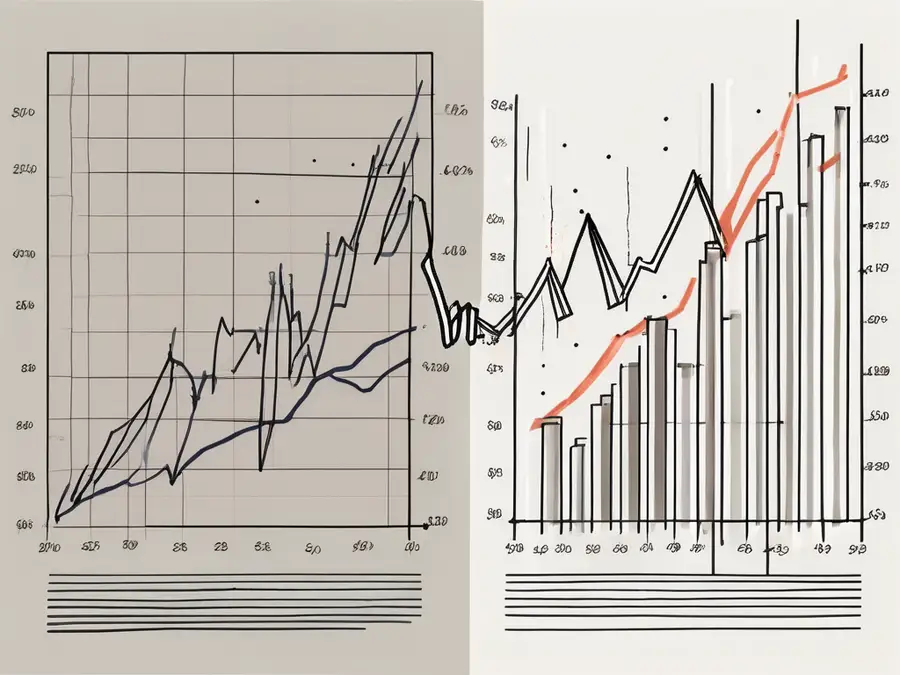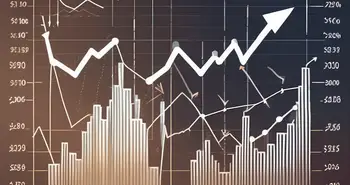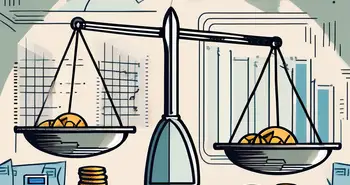CFDs Explained

I have been trading Contracts for Difference (CFDs) for over a decade now, and I must say it's one of the most exciting and rewarding forms of investment. If you're looking to venture into the world of CFD trading, this concise guide will provide you with all the essential information you need to get started. From understanding the basic concept of CFDs to learning about the mechanics and risks involved, this guide has got you covered.
What are Contracts for Difference (CFDs)?
Let's start with the basics. Contracts for Difference, or CFDs, are derivative financial instruments that allow traders to speculate on the price movements of various underlying assets, such as stocks, commodities, indices, and currencies, without owning the actual asset. In simple terms, when you trade CFDs, you are entering into a contract with a broker based on the price difference of the underlying asset from the time you open the trade to the time you close it.
The Basic Concept of CFDs
The basic concept of CFDs can be grasped easily. When you open a long position on a CFD, you expect the price of the underlying asset to rise. Conversely, when you open a short position, you anticipate the price to fall. The profit or loss you incur is determined by the difference between the opening and closing prices, multiplied by the number of CFD units you trade.
Key Features of CFDs
Before diving deeper into CFD trading, it's important to understand the key features that set CFDs apart from other investment options. CFDs offer leverage, which allows you to control a larger position with a smaller upfront investment. They also provide the flexibility of trading both long and short positions, enabling you to profit regardless of whether the market is rising or falling. Additionally, CFDs offer a wide range of markets and assets to choose from, ensuring that there are ample trading opportunities available.
The Mechanics of CFD Trading
Now that you have a fundamental understanding of CFDs, let's delve into the mechanics of CFD trading. It's crucial to know how to trade CFDs effectively to maximize your potential gains.
How to Trade CFDs
Trading CFDs involves a simple process. First, you need to choose a reliable online broker that offers CFDs. Once you have an account, you can start analyzing the markets and identifying potential trading opportunities. When you find an asset you want to trade, you can enter a position by selecting the number of CFD units you wish to trade and specifying your desired direction (long or short). Managing risk is paramount in CFD trading, so it's crucial to set stop-loss and take-profit orders to limit potential losses and secure profits.
Understanding Leverage in CFD Trading
Leverage is an essential aspect of CFD trading. It amplifies your exposure to the market and allows you to trade a larger position with a smaller initial capital. While leverage can significantly increase potential returns, it also heightens the risk involved. Therefore, it's crucial to use leverage wisely and always consider the potential downsides. Implementing a sound risk management strategy is vital to protect your account from significant losses.
Benefits and Risks of CFD Trading
Like any form of investment, CFD trading comes with both benefits and risks. It's important to weigh them carefully before venturing into this exciting market.
Potential Advantages of CFD Trading
One of the key advantages of CFD trading is the ability to profit in both rising and falling markets. This flexibility allows you to take advantage of short-term price movements and potentially generate returns even in volatile conditions. Additionally, the leverage provided by CFDs can enhance your profits if used wisely and in line with your risk tolerance. CFDs also provide easy access to a wide range of global markets, allowing you to diversify your portfolio and explore different sectors and asset classes.
Potential Risks and Drawbacks
While CFD trading offers various opportunities, it's crucial to be aware of the potential risks involved. The leverage available in CFD trading can magnify losses as well, potentially leading to significant financial damage if not managed appropriately. Furthermore, CFDs are subject to overnight financing charges, which can erode your profits if you hold positions for an extended period. Therefore, it's vital to thoroughly educate yourself about CFD trading and implement effective risk management strategies to protect your capital.
CFD Trading Strategies
Now that you have gained a solid understanding of CFD trading and its associated risks and benefits, it's time to explore different trading strategies that can help you succeed in this dynamic market.
Short-term vs Long-term Strategies
Traders have different approaches when it comes to CFD trading. Some traders focus on short-term strategies, capitalizing on intraday price fluctuations to make quick profits. Others adopt a long-term perspective, identifying trends and holding positions for weeks, months, or even years. Both approaches have their merits, and the choice depends on your personal trading style and goals.
Fundamental and Technical Analysis in CFD Trading
When it comes to analyzing CFD markets, traders often use a combination of fundamental and technical analysis. Fundamental analysis involves studying economic indicators, company financials, and news events to assess the intrinsic value of an asset. On the other hand, technical analysis involves analyzing price charts and patterns to identify trends and potential entry or exit points. Combining both approaches can provide a comprehensive view of the market and enhance your trading decisions.
Regulatory Framework for CFD Trading
As with any financial activity, CFD trading is subject to regulations to protect traders' interests and ensure fair market practices.
Role of Regulatory Bodies in CFD Trading
Regulatory bodies play a crucial role in overseeing CFD trading activities. They establish rules and guidelines that brokers must adhere to, ensuring transparency, fair pricing, and ethical conduct in the market. Some of the prominent regulatory bodies include the Financial Conduct Authority (FCA) in the UK, the Australian Securities and Investments Commission (ASIC), and the Cyprus Securities and Exchange Commission (CySEC).
Understanding Compliance and Legal Aspects
When engaging in CFD trading, it's important to understand the compliance and legal aspects associated with this activity. Always ensure that you trade with a regulated broker, as this provides an additional layer of security for your funds and ensures that the broker adheres to industry-best practices. It's also crucial to familiarize yourself with any specific regulations or restrictions in your country of residence.
Personally, I have found that staying informed and continuously learning about the market and trading techniques have been the keys to my success in CFD trading. Remember that CFD trading involves risks, and it's vital to approach it with a disciplined mindset and a solid trading plan.
Frequently Asked Questions (FAQs)
Q: What are Contracts for Difference (CFDs)?
A: Contracts for Difference (CFDs) are derivative financial instruments that allow traders to speculate on the price movements of underlying assets without owning the actual asset.
Q: How does CFD trading work?
A: CFD trading involves entering into a contract with a broker based on the price difference of the underlying asset. Traders profit or lose based on the difference between the opening and closing prices of the CFD.
Q: What are the benefits of CFD trading?
A: CFD trading offers the flexibility to profit in both rising and falling markets, access to a wide range of markets and assets, and the ability to trade with leverage.
Q: What are the risks of CFD trading?
A: The risks of CFD trading include potential losses due to leverage, overnight financing charges, and the inherent volatility of the underlying markets.
Q: How can I manage the risks in CFD trading?
A: Risk management is crucial in CFD trading. It involves setting stop-loss and take-profit orders, using appropriate leverage, and staying disciplined with your trading plan.
Remember, CFD trading requires dedication, continuous learning, and a disciplined approach. With proper knowledge and risk management, it can be a rewarding form of investment. Happy trading!
Ready to elevate your CFD trading experience? Join Morpher today and discover a revolutionary platform that's changing the game. With zero fees, infinite liquidity, and the ability to trade across a multitude of asset classes, Morpher.com offers you the tools to trade smarter and more efficiently. Whether you're interested in fractional investing, short selling without interest fees, or seeking to maximize your trades with up to 10x leverage, Morpher has you covered. Plus, enjoy the safety and control of a non-custodial wallet, ensuring your funds and keys remain in your hands. Don't miss out on this unique trading experience built on the Ethereum Blockchain. Sign Up and Get Your Free Sign Up Bonus now to start trading the future with Morpher.

Disclaimer: All investments involve risk, and the past performance of a security, industry, sector, market, financial product, trading strategy, or individual’s trading does not guarantee future results or returns. Investors are fully responsible for any investment decisions they make. Such decisions should be based solely on an evaluation of their financial circumstances, investment objectives, risk tolerance, and liquidity needs. This post does not constitute investment advice.

Painless trading for everyone
Hundreds of markets all in one place - Apple, Bitcoin, Gold, Watches, NFTs, Sneakers and so much more.

Painless trading for everyone
Hundreds of markets all in one place - Apple, Bitcoin, Gold, Watches, NFTs, Sneakers and so much more.









